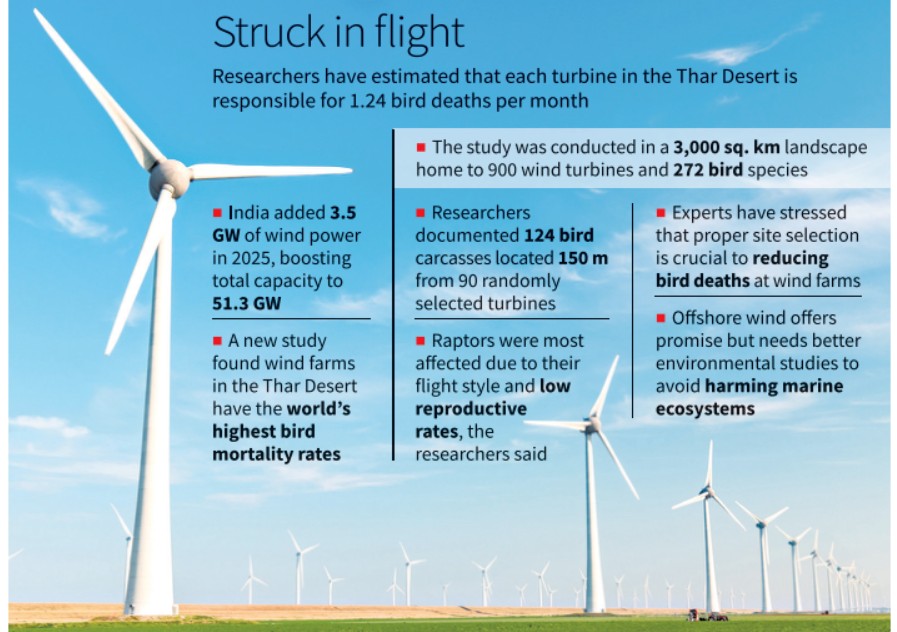Why in the News?
A new study by the Wildlife Institute of India (WII) reveals that wind farms in the Thar Desert, Rajasthan, have the highest recorded bird mortality rates globally.

Bird Mortality at Wind Farms: Key Findings
- Study Details: Conducted across 3,000 sq. km in Jaisalmer, Rajasthan, covering 90 wind turbines and 272 bird species, including the critically endangered Great Indian Bustard.
- Carcass Count: 124 bird carcasses found within 150m radius of turbines.
- Annual Mortality Estimate: 4,464 birds per 1,000 sq. km, after corrections for detection gaps and scavenger interference.
- Control Sites: 28 sites (500–2,000m from turbines) found zero carcasses — indicating turbines as the direct cause.
- Reasons:
- Policy Gap: Onshore wind projects in India do not require Environmental Impact Assessments (EIAs), which weakens ecological safeguards.
India’s Wind Energy Growth:
|
Comparison with Past Studies:
- 2019 Studies: Recorded just 0.47 bird deaths per turbine/year in Kutch and Davangere.
- Thar Desert Rate: 1.24 bird deaths per turbine/month — significantly higher.
- Contributing Factors:
- High bird density in Thar.
- Location along Central Asian Flyway.
- Collisions with turbine-linked power lines included in this study.
Proposed Mitigation Measures:
- Technological:
- Paint one turbine blade for visibility.
- Shut down turbines during peak migration or high-risk periods.
- Planning-Based:
- Careful Site Selection seen as most critical step.
- Use of tools like AVISTEP (Avian Sensitivity Tool for Energy Planning), which maps avian sensitivity across India.
- AVISTEP ranks zones as low to very high sensitivity — intended as a guide for site avoidance.
| [UPSC 2012] Vultures which used to be very common in Indian countryside some years ago are rarely seen nowadays. This is attributed to:
Options: (a) the destruction of their nesting sites by new invasive species disease among them (b) a drug used by cattle owners for treating their diseased cattle persistent and fatal * (c) scarcity of food available to them (d) a widespread, persistent and fatal disease among them |
Get an IAS/IPS ranker as your 1: 1 personal mentor for UPSC 2024

